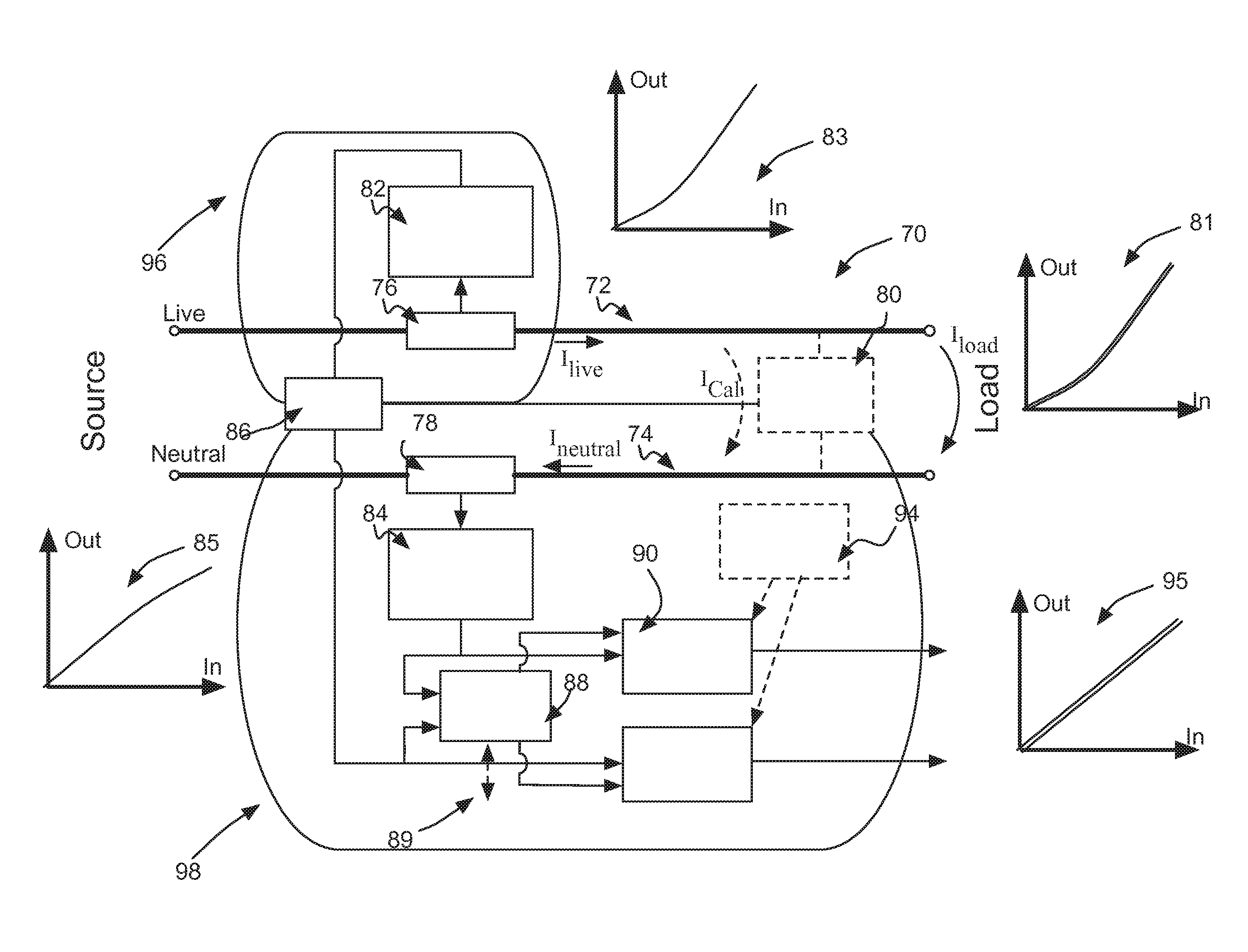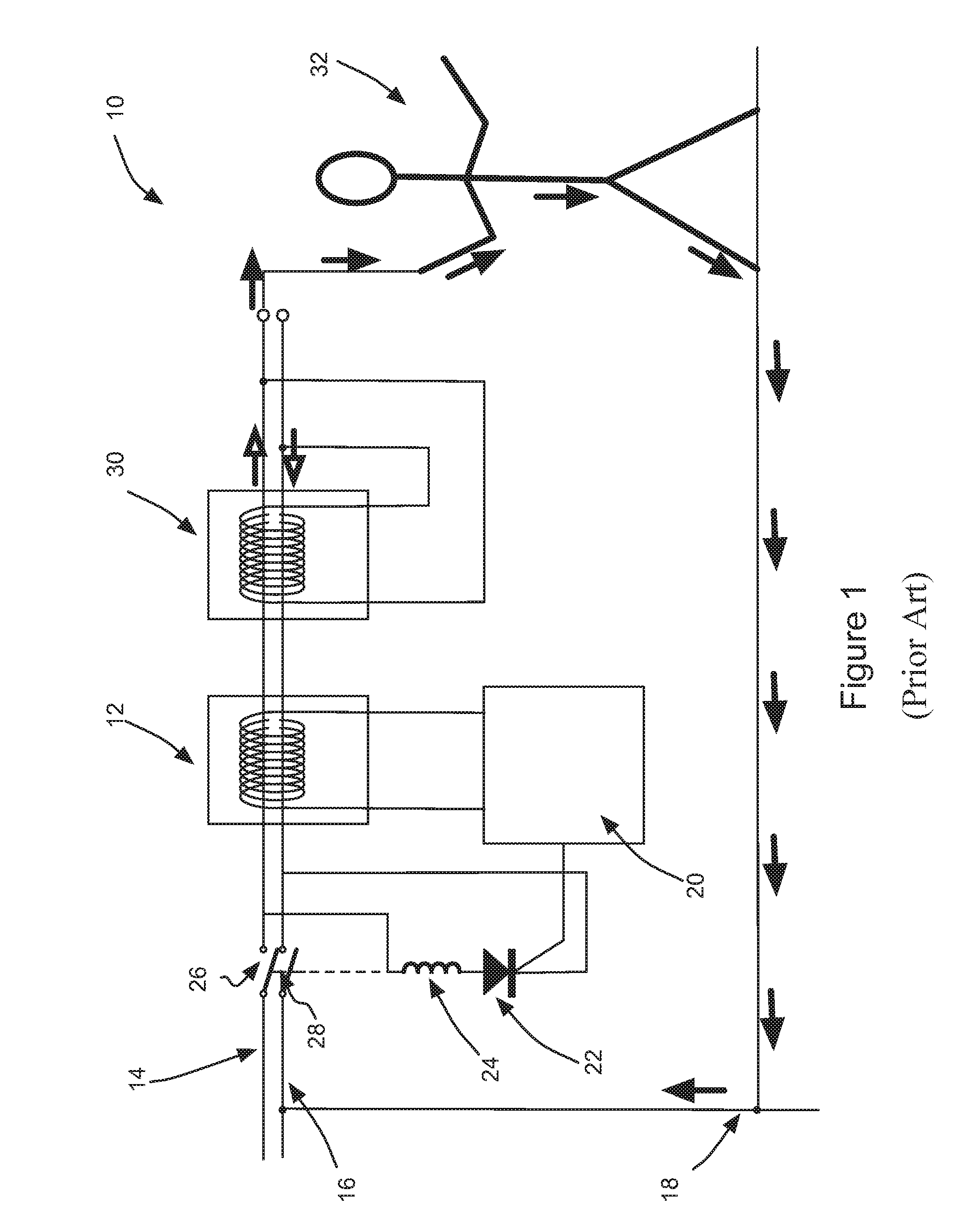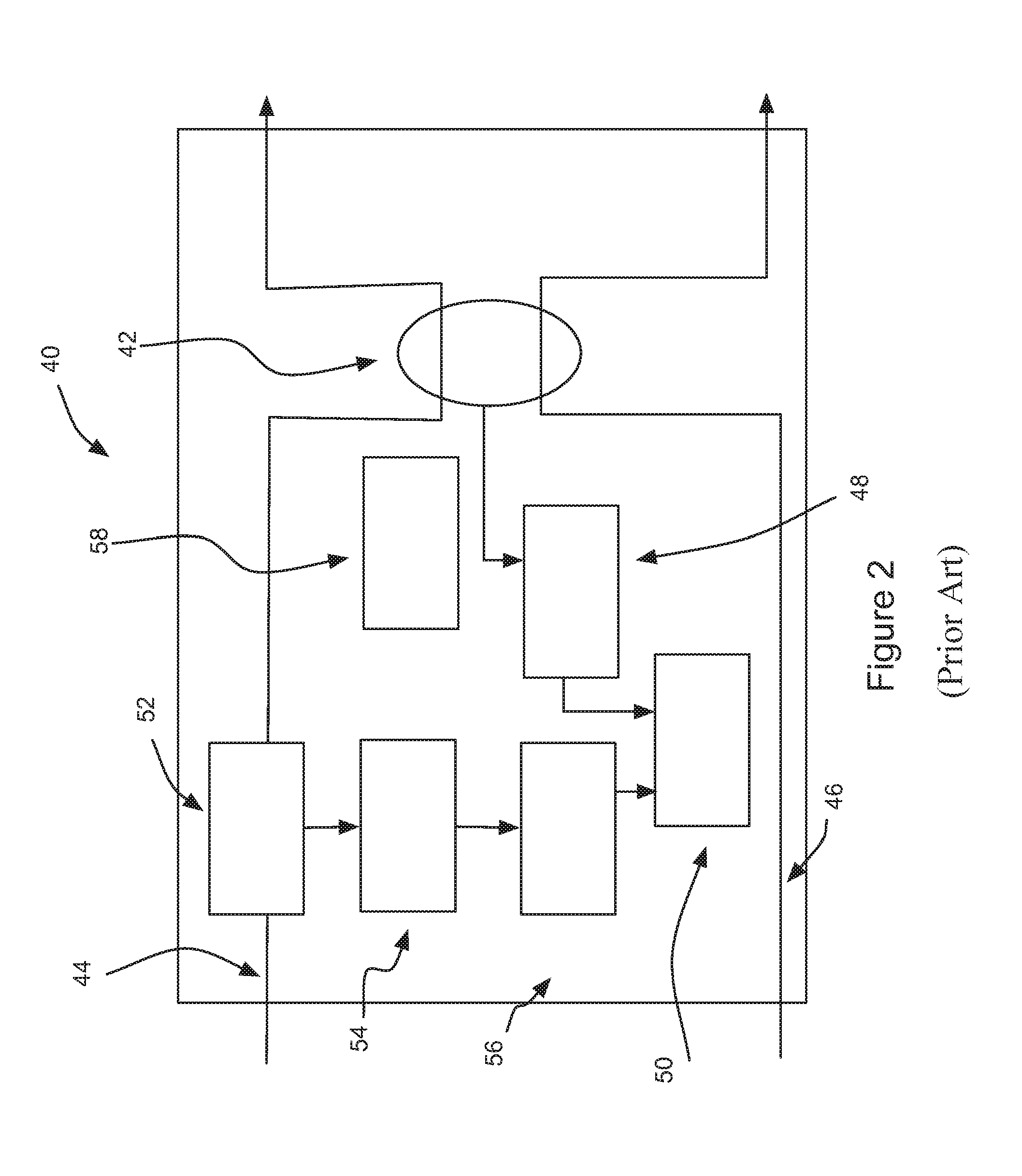Current measurement
a current measurement and current shunt technology, applied in the direction of power measurement by current/voltage, short-circuit testing, instruments, etc., can solve the problems of noise, noise, non-linearity and phase error of current transformers, hall current probes, etc., to reduce noise, reduce noise, and improve the accuracy of current difference determination
- Summary
- Abstract
- Description
- Claims
- Application Information
AI Technical Summary
Benefits of technology
Problems solved by technology
Method used
Image
Examples
first embodiment
[0116]A block diagram representation of current measurement apparatus 70 according to the invention is shown in FIG. 3. The current measurement apparatus 70 comprises a live conductor 72 and a neutral conductor 74, which convey electrical power from a source to a load in a mains electricity circuit. The current measurement apparatus is installed, e.g. in a distribution box, in residential or business premises. A first shunt resistor 76 (which constitutes a first measurement device) is present in series in the live conductor 72 and a second shunt resistor 78 (which constitutes a second measurement device) is present in series in the neutral conductor 74. The current measurement apparatus 70 further comprises a calibration source 80, which is electrically coupled to the live and neutral conductors 72, 74. As is described further below the calibration source 80 is operative to apply a calibration signal to the live and neutral conductors to calibrate the first and second shunt resistor...
second embodiment
[0127]Current measurement apparatus 100 is shown in FIG. 4. Components in common with the embodiment of FIG. 3 are designated by like reference numerals and the reader's attention is directed to the description provided above with reference to FIG. 3 for a description of such common components. Components particular to the embodiment of FIG. 4 will now be described. The calibration source 80 comprises a calibration resistor 102 in series with a switch 104 with the series arrangement of calibration resistor 102 switch 104 being electrically connected between the live and neutral conductors 72, 74. The current measurement apparatus 100 of FIG. 4 further comprises a calibration control unit 106, which forms part of the signal processing circuitry described above. The calibration control unit 106 is operative to turn the switch 104 on and off in a predetermined fashion with current passing between the live and neutral conductors when the switch 104 is closed. Turning the switch on and ...
third embodiment
[0128]Current measurement apparatus 110 is shown in FIG. 5. Components in common with the embodiments of FIGS. 3 and 4 are designated by like reference numerals and the reader's attention is directed to the description provided above with reference to FIGS. 3 and 4 for a description of such common components. Components particular to the embodiment of FIG. 5 will now be described. Instead of the first shunt resistor 76 of FIGS. 3 and 4 the embodiment of FIG. 5 comprises a current transformer 112 which is configured as described elsewhere herein such that it is operative to measure current flowing in the live conductor 72. Although not shown in FIG. 5 the current transformer comprises a burden resistor connected across the coil of the transformer and which is operative in accordance with normal design practice. In view of the inherently isolating characteristic of the current transformer 112 there is no need to provide for isolation between the processing chains of the current trans...
PUM
 Login to View More
Login to View More Abstract
Description
Claims
Application Information
 Login to View More
Login to View More - R&D
- Intellectual Property
- Life Sciences
- Materials
- Tech Scout
- Unparalleled Data Quality
- Higher Quality Content
- 60% Fewer Hallucinations
Browse by: Latest US Patents, China's latest patents, Technical Efficacy Thesaurus, Application Domain, Technology Topic, Popular Technical Reports.
© 2025 PatSnap. All rights reserved.Legal|Privacy policy|Modern Slavery Act Transparency Statement|Sitemap|About US| Contact US: help@patsnap.com



